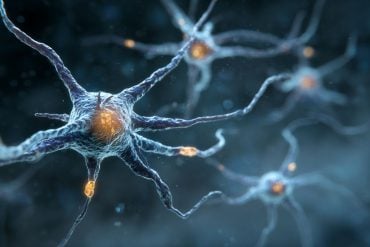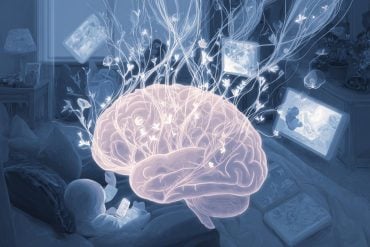Summary: A new study has created the first normative charts of brain functional development from birth to six years old, highlighting how brain network growth tracks with cognitive milestones. Using MRI scans from over 1,000 children, researchers mapped how different brain networks, such as visual, subcortical, and attention systems, mature and interact over time.
Findings show that while stronger connections generally reflect brain development, decreasing connectivity within specialized regions indicates fine-tuning for specific functions. These functional brain charts may eventually help detect early deviations linked to neurodevelopmental disorders like ADHD and autism.
Key Facts:
- First Functional Brain Charts: Researchers established normative developmental trajectories for major brain networks from infancy through early childhood.
- Network Specialization: Decreases in connectivity within certain networks, like the visual system, reflect specialization and brain fine-tuning.
- Clinical Potential: Functional brain charts could help identify early signs of neurodevelopmental disorders and guide interventions.
Source: UNC
In early childhood, growth charts are used to monitor the height, weight and head circumference, serving as a screening tool to identify physical development.
During this window of time, between early infancy and childhood, the brain continues to mature and is associated with behavioral developmental milestones. These milestones include improved vision, sensory, language, and executive functions.

Although brain structural developmental characteristics starting from birth and extending to toddlerhood have been widely reported, researchers are seeking to understand the vital importance to chart early brain functional development as a step toward understanding the cognitive ability.
The study, led by senior author Weili Lin, PhD, director of the UNC Biomedical Research Imaging Center (BRIC), examines the functional differences in sleep/wake states, developmental charts and associations between brain growth charts and cognition.
Published in Nature Human Behavior, researchers obtained MRI scans from 1091 children ranging in age from birth to six years.
They found objective measures of normative brain functional maturation charts and developmental milestones spanning over different cognitive domains, including both basic and higher-order cognitions.
Normative growth curves for eight functional networks included visual, somatomotor, default, control, subcortical, limbic, and dorsal and ventral attention networks.
In addition, results showed the developmental characteristics in how these networks interact with each other with age and how their interactions play key roles in predicting cognitions.
For an example, the study highlighted the developmental trajectory of the visual network, which was the only network to show a marked decrease in functional connectivity (FC) after reaching its peak during the first six years of life.
Visual functions, such as facial/object recognition and visual attention emerge around 5–7 months. However, at the same time researchers saw a decrease which may reflect the brain specializing in specific visual functions, with different parts of the visual system starting to take on specific roles.
The study suggests that stronger brain connections usually reflect overall brain development, while a decrease in connections within specific regions may show that the brain is fine-tuning that system for more specialized tasks during early infancy.
Another key finding showed how the subcortical network had a relatively stable and high FC throughout the first 6 years of age. These cognitive functions within the subcortical network include emotion processing, memory formation, reward processing and automatic functions (such as regulating heart rate and blood pressure).
The authors note that research has shown that newborns and infants exhibit the ability to respond to emotional stimuli, a response that is partially regulated by subcortical regions. This also shows how FC is high and stable in the subcortical network.
Therefore, reflecting early maturation and foundational roles in cognitive and physiological functioning in the first 6 years of life. Lin explains that these potential applications go beyond neurology and pediatrics.
“In particular, the results could be used to delineate deviations of brain functional development from normal population in subjects with potential disorders with neurodevelopmental origins, i.e., ADHD, autism and so on,” said Lin, the Dixie Boney Soo Distinguished Professor of Neurological Medicine in the UNC Department of Radiology.
Lin says this study represents the first step toward establishing normative brain functional developmental charts that can be generalized to the general population.
The charts may also provide a sensitive, objective and quantitative means to identify subjects whose brain functional developmental characteristics may deviate from the normative charts, similar to how the head circumference charts are used clinically.
“Importantly, although head circumference charts have been widely used to identify children who may deviate from the normal ranges of head circumferences, it does not provide insights into the underlying neural substrates leading to the observed deviations,” said Lin.
“In our case, the charts can shed light on which cognitive domains and/or the interactions between different cognitive domains may be altered. The information can then be used potentially for patient management and/or guiding interventional approaches.”
Other authors of the paper are first author Weiyan Yin, Tangfei Li, Zhengwang Wu, Sheng-Che Hung, Dan Hu, Seoyoon Cho, Yue Sun, Mackenzie Allan Woodburn, Li Wang, Gang Li, Joseph Piven, Hongtu Zhu, and Jessica Cohen – all of UNC Chapel Hill.
Funding: Research funded by several NIH funded grants.
About this neurodevelopment research news
Author: Brittany Phillips
Source: UNC
Contact: Brittany Phillips – UNC
Image: The image is credited to Neuroscience News
Original Research: Open access.
“Charting brain functional development from birth to 6 years of age” by Weili Lin et al. Nature Human Behavior
Abstract
Charting brain functional development from birth to 6 years of age
Early childhood is crucial for brain functional development. Using advanced neuroimaging methods, characterizing functional connectivity has shed light on the developmental process in infants.
However, insights into spatiotemporal functional maturation from birth to early childhood are substantially lacking.
In this study, we aggregated 1,091 resting-state functional MRI scans of typically developing children from birth to 6 years of age, harmonized the cohort and imaging-state-related bias, and delineated developmental charts of functional connectivity within and between canonical brain networks.
These charts revealed potential neurodevelopmental milestones and elucidated the complex development of brain functional integration, competition and transition processes.
We further determined that individual deviations from normative growth charts are significantly associated with infant cognitive abilities. Specifically, connections involving the primary, default, control and attention networks were key predictors.
Our findings elucidate early neurodevelopment and suggest that functional connectivity-derived brain charts may provide an effective tool to monitor normative functional development.






